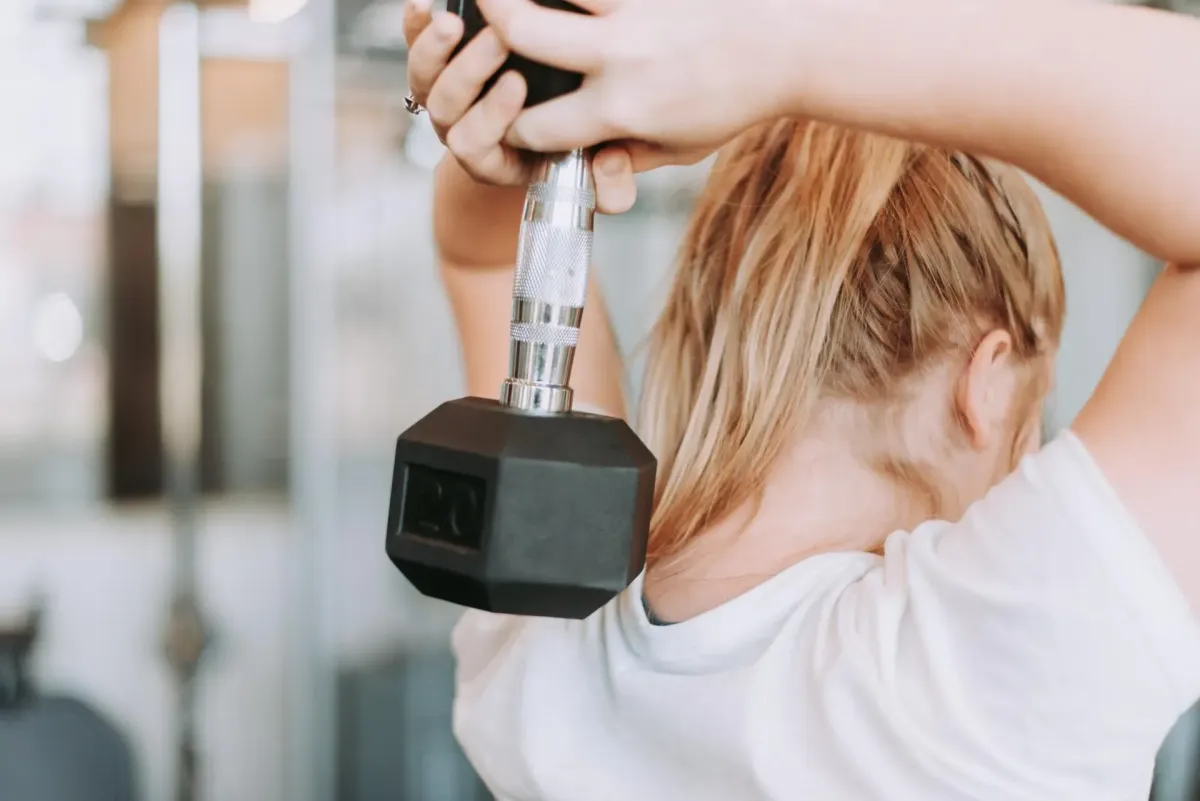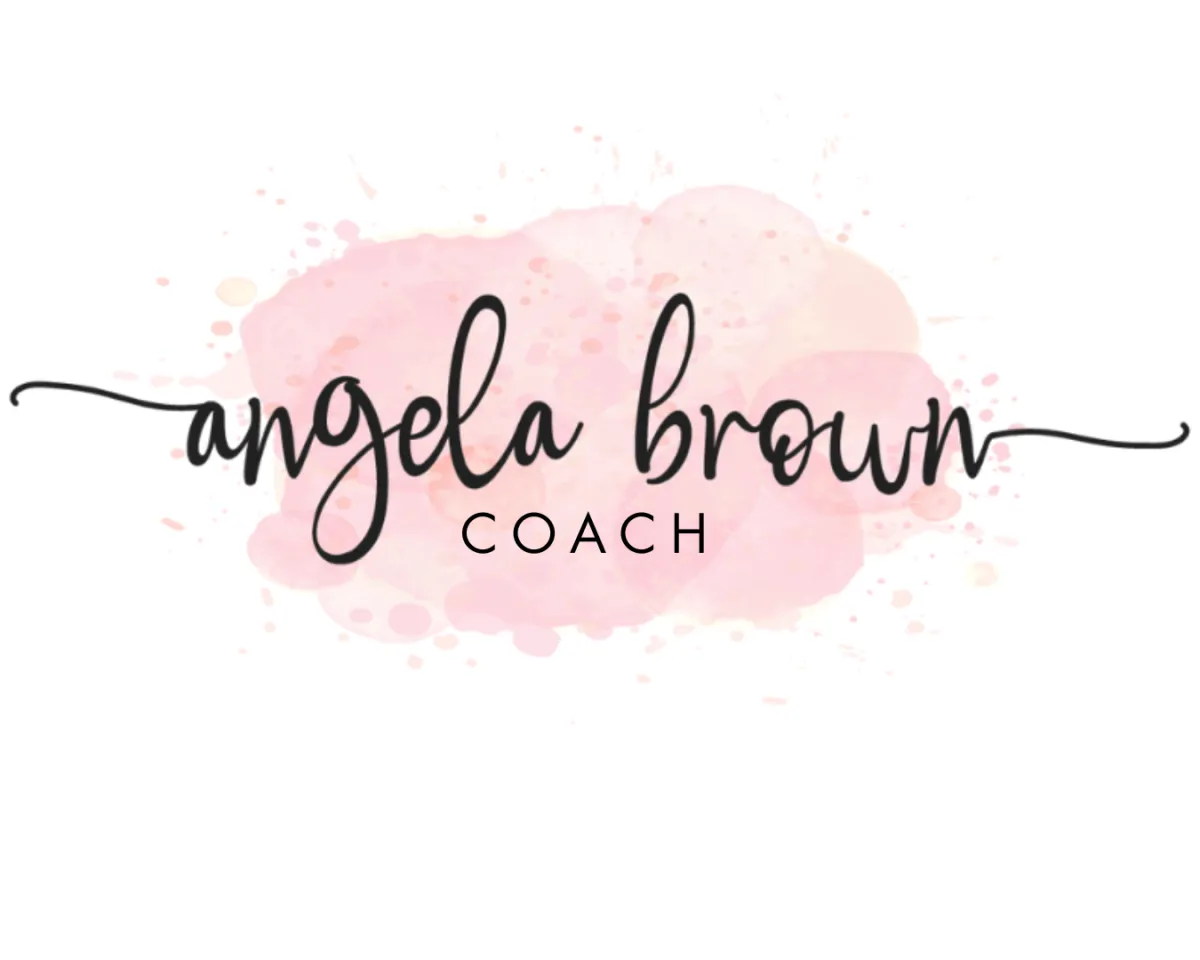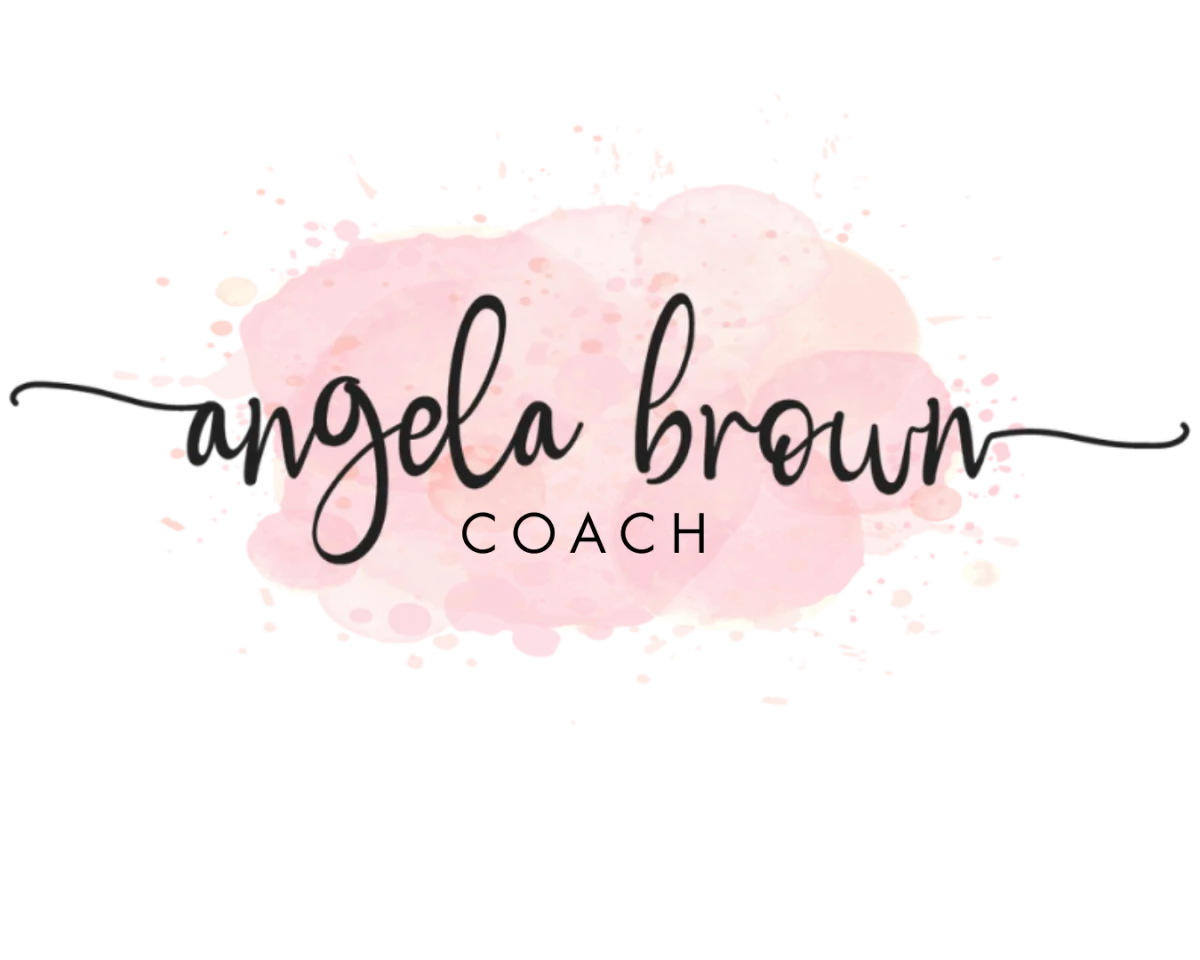READ UP ON THE LATEST HORMONE AND THYROID NEWS!

A beginner’s guide to building your own thyroid-friendly workout
How you exercise can play a big role in your thyroid health. If you want to learn more about why this is, I have an entire blog post dedicated to the topic, here.
The best thing we can do for our thyroid when it comes to exercising is to not put our bodies into a super long state of high stress, which is what happens on a long run or tough spin class.
Instead, one of the best types of exercise you can do is weight training! As a certified physical trainer and someone with hypothyroidism, weight training is something I love to do myself, and something I have my clients do, too.
If you’ve never done it before though, it can feel a bit overwhelming! So, I wanted to provide you with some tools and ideas so you can start weight training in a way that supports the health of your thyroid… not to mention all the other physical and mental benefits from regular workouts!
Now, if you’re an advanced athlete with a lot of training experience, this workout strategy may not be right for you. But if you’re just getting into weight training, this blog post is meant to provide some guidance and instructions so you can plan great thyroid-friendly workouts.
What equipment should you use?
The type of equipment you’ll want to use will depend on a few things: where you’re working out, the accessibility and availability of equipment, and the focus of your workout.
You can create great workout plans that just use dumbbells or resistance bands for an at-home workout. Or you can use weight machines at the gym, if that works for you. What is important is to have some sort of resistance. Bodyweight exercises can be great, but adding even just a little bit of weight and resistance to your workouts can bring so many more benefits, including higher metabolism and stronger bones.
Workout duration and focus
For beginners, an optimal workout plan will have you exercising 3-4 times a week for 30-45 minutes per session. As I’ve talked about in other blog posts, we want to keep the focus on short bursts of energy, versus super prolonged high-cardio states. This will help manage our stress hormones and keep the thyroid happy.
An easy way to plan out your workouts is by having an upper vs. lower body focus. So, your weekly split can look like this:
3 workouts a week: 1x upper body, 1x lower body, 1x both
4 workouts a week: 2x upper body, 2x lower body
I always recommend including a few core exercises in each workout, as the core is so foundational to every movement.
Types of movements
A key foundation to an effective exercise plan is to ensure you’re working a variety of muscles and muscle groups. This is why an upper-lower body routine is an easy way for beginners to ensure workouts are well-rounded.
From there, you can organize the movements within each workout between push movements and pull movements.
Push movements are when you push the weight or floor away from your body with force. This includes movements such as squats, pushups, tricep extensions and overhead presses.
Pull movements are when you pull the weight towards your body, or your body towards the equipment. Pull-ups, hamstring curls, deadlifts, and bicep curls are all good examples.
Now, the push-pull framework is just one way to plan your workouts! It might not be what works best for everyone, but I find that it is a good framework to introduce to beginners who want to start planning their own routines.
Push & pull exercises
Here’s a pretty comprehensive list of push and pull exercises, broken out by upper and lower body. If you don’t know what some of these are, I recommend quickly throwing them into the YouTube search bar, and you’ll get lots of different videos showing you how to do the movement! In fact, one of the places I love to point beginners to is the Bowflex “How-to” YouTube Playlist (this isn’t sponsored by the way - I just really love these videos!).
Upper Body Push
Push up
Chest press
Shoulder press
Chest fly
Reverse fly
Tricep extension
Upper Body Pull
Pull up
Bicep curl
Hammer curl
Bent over row
Lat pulldown (machine) or lat pullover (weight)
Upright row
Cable pulls
Shoulder raise
Lower Body Push
Squat (including back squat, front squat, goblet squat, sumo squat, single-leg squat, split squat, etc.)
Leg press (machine)
Forward lunge
Calf raise
Glute bridges
Hip thrust
Lower Body Pull
Deadlift (including conventional, Romanian, single-leg, sumo, etc.)
Good morning
Reverse lunge
Walking lunge
Leg curl
Core exercises (can use on either a push or pull day!)
Bridge
Toe taps
Crunch
Side crunch
Bicycle
Bird-dog
4-point hold
Bear crawl
Plank
Side plank
Shoulder tap
Russian twist
Leg raise
Dead bug
Side bend
Workout template
From there, you can take these exercises and plug them into the below template. I recommend planning out your workouts week-by-week, and that way you can ensure you’re getting a good variety of movements using multiple muscle groups.
Set 1: 3-4 rounds of 8-12 repetitions per exercise OR 3-4 rounds of each exercise, 45 seconds on, 15 seconds rest.
Exercise 1a
Exercise 1b
Exercise 1c
Set 2: 3-4 rounds of 8-12 repetitions per exercise OR 3-4 rounds of each exercise, 45 seconds on, 15 seconds rest.
Exercise 2a
Exercise 2b
Exercise 2c
Set 3: 3-4 rounds of 8-12 repetitions per exercise OR 3-4 rounds of each exercise, 45 seconds on, 15 seconds rest.
Exercise 3a
Exercise 3b
Exercise 3c
Core set: 3-4 rounds of 15-20 repetitions per exercise OR 4-5 rounds of each exercise, 45 seconds on, 15 seconds rest.
Core exercise A
Core exercise B
Core exercise C
I hope this helps you get excited about weight training, as it really is one of the best types of exercise for a happy, healthy thyroid. If you ever have questions about exercising or want some help with exercise planning, please reach out to me.

A beginner’s guide to building your own thyroid-friendly workout
How you exercise can play a big role in your thyroid health. If you want to learn more about why this is, I have an entire blog post dedicated to the topic, here.
The best thing we can do for our thyroid when it comes to exercising is to not put our bodies into a super long state of high stress, which is what happens on a long run or tough spin class.
Instead, one of the best types of exercise you can do is weight training! As a certified physical trainer and someone with hypothyroidism, weight training is something I love to do myself, and something I have my clients do, too.
If you’ve never done it before though, it can feel a bit overwhelming! So, I wanted to provide you with some tools and ideas so you can start weight training in a way that supports the health of your thyroid… not to mention all the other physical and mental benefits from regular workouts!
Now, if you’re an advanced athlete with a lot of training experience, this workout strategy may not be right for you. But if you’re just getting into weight training, this blog post is meant to provide some guidance and instructions so you can plan great thyroid-friendly workouts.
What equipment should you use?
The type of equipment you’ll want to use will depend on a few things: where you’re working out, the accessibility and availability of equipment, and the focus of your workout.
You can create great workout plans that just use dumbbells or resistance bands for an at-home workout. Or you can use weight machines at the gym, if that works for you. What is important is to have some sort of resistance. Bodyweight exercises can be great, but adding even just a little bit of weight and resistance to your workouts can bring so many more benefits, including higher metabolism and stronger bones.
Workout duration and focus
For beginners, an optimal workout plan will have you exercising 3-4 times a week for 30-45 minutes per session. As I’ve talked about in other blog posts, we want to keep the focus on short bursts of energy, versus super prolonged high-cardio states. This will help manage our stress hormones and keep the thyroid happy.
An easy way to plan out your workouts is by having an upper vs. lower body focus. So, your weekly split can look like this:
3 workouts a week: 1x upper body, 1x lower body, 1x both
4 workouts a week: 2x upper body, 2x lower body
I always recommend including a few core exercises in each workout, as the core is so foundational to every movement.
Types of movements
A key foundation to an effective exercise plan is to ensure you’re working a variety of muscles and muscle groups. This is why an upper-lower body routine is an easy way for beginners to ensure workouts are well-rounded.
From there, you can organize the movements within each workout between push movements and pull movements.
Push movements are when you push the weight or floor away from your body with force. This includes movements such as squats, pushups, tricep extensions and overhead presses.
Pull movements are when you pull the weight towards your body, or your body towards the equipment. Pull-ups, hamstring curls, deadlifts, and bicep curls are all good examples.
Now, the push-pull framework is just one way to plan your workouts! It might not be what works best for everyone, but I find that it is a good framework to introduce to beginners who want to start planning their own routines.
Push & pull exercises
Here’s a pretty comprehensive list of push and pull exercises, broken out by upper and lower body. If you don’t know what some of these are, I recommend quickly throwing them into the YouTube search bar, and you’ll get lots of different videos showing you how to do the movement! In fact, one of the places I love to point beginners to is the Bowflex “How-to” YouTube Playlist (this isn’t sponsored by the way - I just really love these videos!).
Upper Body Push
Push up
Chest press
Shoulder press
Chest fly
Reverse fly
Tricep extension
Upper Body Pull
Pull up
Bicep curl
Hammer curl
Bent over row
Lat pulldown (machine) or lat pullover (weight)
Upright row
Cable pulls
Shoulder raise
Lower Body Push
Squat (including back squat, front squat, goblet squat, sumo squat, single-leg squat, split squat, etc.)
Leg press (machine)
Forward lunge
Calf raise
Glute bridges
Hip thrust
Lower Body Pull
Deadlift (including conventional, Romanian, single-leg, sumo, etc.)
Good morning
Reverse lunge
Walking lunge
Leg curl
Core exercises (can use on either a push or pull day!)
Bridge
Toe taps
Crunch
Side crunch
Bicycle
Bird-dog
4-point hold
Bear crawl
Plank
Side plank
Shoulder tap
Russian twist
Leg raise
Dead bug
Side bend
Workout template
From there, you can take these exercises and plug them into the below template. I recommend planning out your workouts week-by-week, and that way you can ensure you’re getting a good variety of movements using multiple muscle groups.
Set 1: 3-4 rounds of 8-12 repetitions per exercise OR 3-4 rounds of each exercise, 45 seconds on, 15 seconds rest.
Exercise 1a
Exercise 1b
Exercise 1c
Set 2: 3-4 rounds of 8-12 repetitions per exercise OR 3-4 rounds of each exercise, 45 seconds on, 15 seconds rest.
Exercise 2a
Exercise 2b
Exercise 2c
Set 3: 3-4 rounds of 8-12 repetitions per exercise OR 3-4 rounds of each exercise, 45 seconds on, 15 seconds rest.
Exercise 3a
Exercise 3b
Exercise 3c
Core set: 3-4 rounds of 15-20 repetitions per exercise OR 4-5 rounds of each exercise, 45 seconds on, 15 seconds rest.
Core exercise A
Core exercise B
Core exercise C
I hope this helps you get excited about weight training, as it really is one of the best types of exercise for a happy, healthy thyroid. If you ever have questions about exercising or want some help with exercise planning, please reach out to me.

CALL US TODAY! (314) 226-3137
Content, including images, displayed on this website is protected by copyright laws. Downloading, republication, retransmission or reproduction of content on this website.

